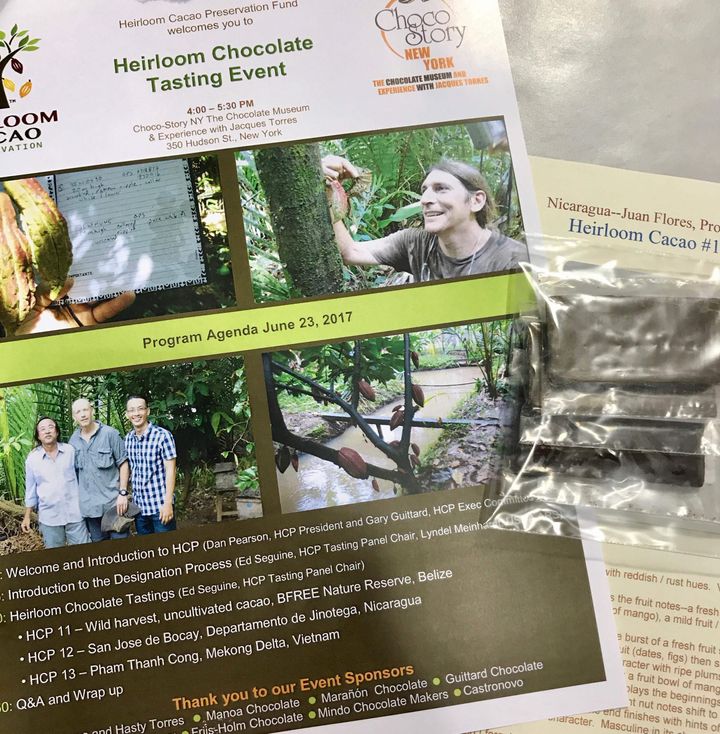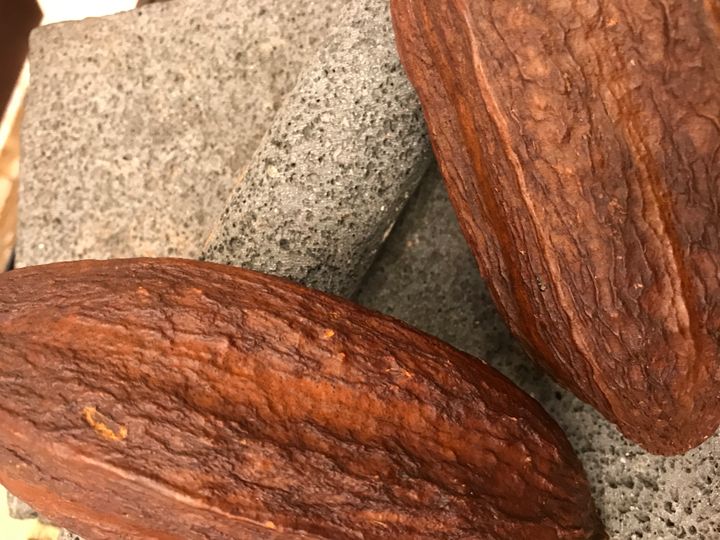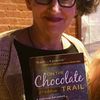
Heirloom Chocolate Tasting
I have always been partial to heirlooms and only began to understand heirloom chocolate at a chocolate tasting a week ago hosted by the non-profit Heirloom Cacao Preservation Fund. It featured cacao beans from Belize, Nicaragua, and Vietnam. They boasted flavorful profiles and challenged us to consider how the term heirloom applies to chocolate.
Each set of beans had been processed exactly the same way and contained 62% cacao. And each had been numbered based on the chronology of heirloom attribution in the Fund’s methodical search for tasty cacao beans. Each of the three had also passed a blind taste test and had been designated “Heirloom.” These were the eleventh, twelfth and thirteenth to reach this status since the project started in 2012. We were fortunate to try:
- # 11’s beans came from wild cacao trees of the rainforest of Belize. Jacob Marlin found these authentic criollo trees.
- # 12 Nicaragua’s beans originate with producer Juan Flores and have a very fruity quality.
- # 13 are produced in Vietnam with a fruity flavor and a strong note of coconut.
Each batch reflects the complex and multiple contributors to taste-- genetics, location, type of bean, and more.
As a precious object handed down through the generations of a family, these Heirloom beans connect to the earliest of chocolates. The respective producers value the cacao trees and the inherent value of their beans. Like a secret stash of old chocolate stored in a chest for decades, these beans are being rediscovered for their flavor and complexity. They are, like antiques, authenticated by the panel of twelve judges looking for real chocolate flavor. If the flavor is good then the Fund looks at the genetics of the beans, and then they will pursue chemical analyses.
The Heirloom Cacao Preservation Fund supports farmers in preserving and developing unique aspects of the many varietals of cacao beans, contrary to the tendency in industrial chocolate to seek out high yielding yet flavorless beans. It is a collaboration between the Fine Chocolate Industry Association and the United States Department of Agriculture’s Agricultural Research Service (USDA/ARS).
Tasting leader Ed Saguine instructed us to proceed this way:
- Hold a small piece of chocolate just under the nostrils. Suck in air past the chocolate. Repeat a few times.
- Place a small piece of chocolate in the middle of tongue. Gently hold it to the top of the mouth. Sip in air. Focus on the journey or experience, to be one with the chocolate. Do not drink cold water.
- Repeat with each of the three single origin samples from the different regions of the world.
Each sample was delicious. It turned out that we had also tasted beans with a venerable lineage. As Ed explained, the Belize cacao “genetics harken from the ancient criollos of the Aztecs, Mayas, Toltecs, Olmecs, and before ... The trees ... are simply the progeny of these passed down through generations."
Thank you to the Heirloom Cacao Preservation Fund for protecting these heirlooms for us.

Dried cocoa pods on a chocolate stone
